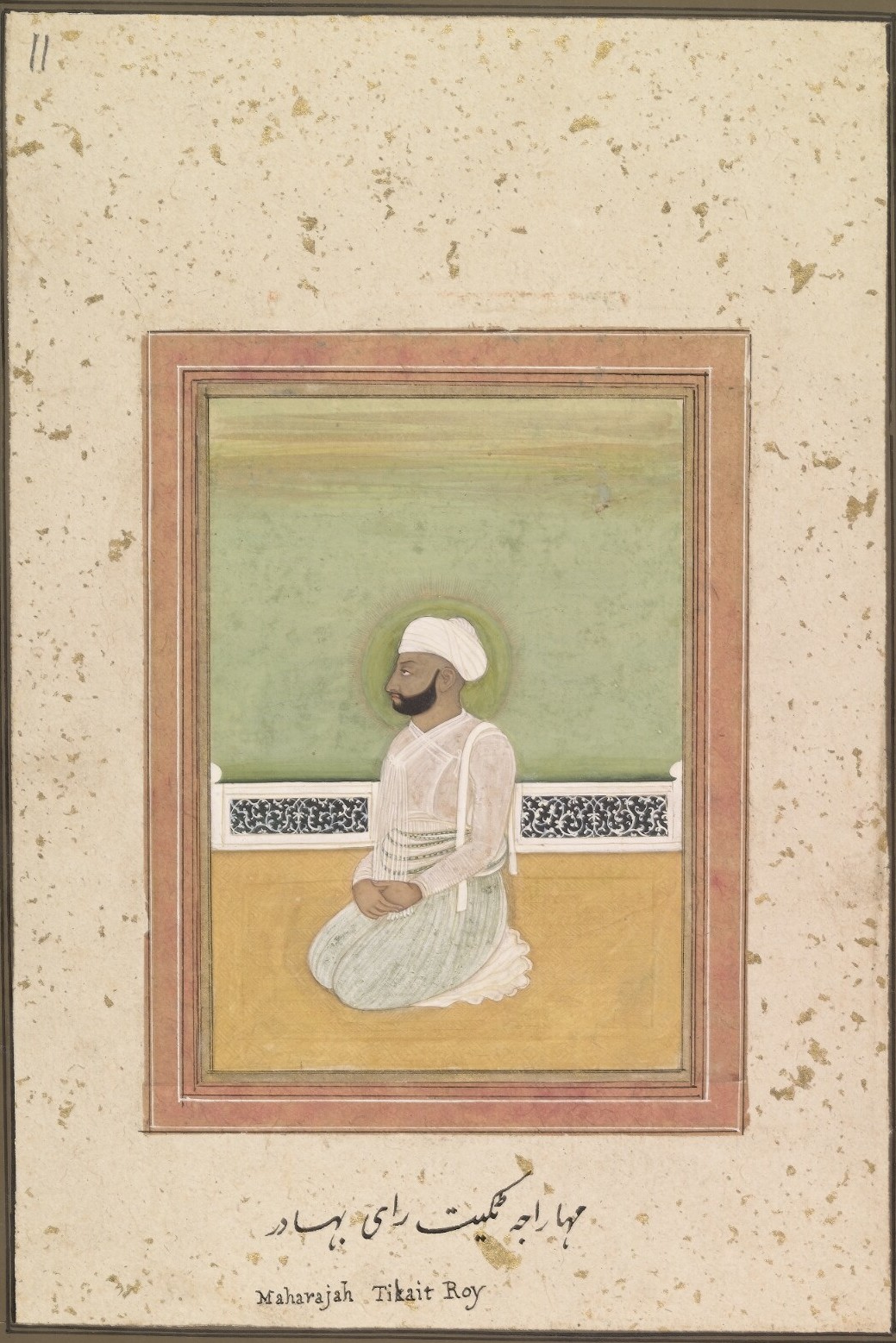Raja Tikait Rai on:
[Wikipedia]
[Google]
[Amazon]
 Tikait Rai Bahadur (1760–1808) was the Diwan of
Tikait Rai Bahadur (1760–1808) was the Diwan of
/ref> He also built
Lucknow City Development Plan 2006
Places of Interest around Kanpur, Bithoor, Patthar Ghat
{{DEFAULTSORT:Rai, Raja Tikait History of Uttar Pradesh People from Lucknow Awadh 1808 deaths 1760 births
 Tikait Rai Bahadur (1760–1808) was the Diwan of
Tikait Rai Bahadur (1760–1808) was the Diwan of Awadh
Awadh (), known in British historical texts as Avadh or Oudh, is a region in the modern Indian state of Uttar Pradesh, which was before independence known as the United Provinces of Agra and Oudh. It is synonymous with the Kośāla region of ...
from 1791 - 1796 in the regime of Asaf-u-daula.
He belonged from the Hindu Kayastha community.
Famine of 1784-85
Nawab Asif-ud-daula along with his prime minister Mirza Hasan Raza Khan and deewan Raja Tikait Rai, established a charitable institution (Rifah-e-Aam) which provided relief to thousands. Asif-ud-daula distributed salaries to the people with finance minister Raja Jhau Lal and deewan Raja Tikait Rai .Welfare construction
He also constructed manytemple
A temple (from the Latin ) is a building reserved for spiritual rituals and activities such as prayer and sacrifice. Religions which erect temples include Christianity (whose temples are typically called churches), Hinduism (whose temples ...
s, mosque
A mosque (; from ar, مَسْجِد, masjid, ; literally "place of ritual prostration"), also called masjid, is a place of prayer for Muslims. Mosques are usually covered buildings, but can be any place where prayers ( sujud) are performed, ...
s, bridge
A bridge is a structure built to span a physical obstacle (such as a body of water, valley, road, or rail) without blocking the way underneath. It is constructed for the purpose of providing passage over the obstacle, which is usually someth ...
s and dug tank
A tank is an armoured fighting vehicle intended as a primary offensive weapon in front-line ground combat. Tank designs are a balance of heavy firepower, strong armour, and good battlefield mobility provided by tracks and a powerful ...
s all over the state, which can still be seen.NAWABS OF OUDH & THEIR SECULARISM - Dr. B. S. Saxena/ref> He also built
imambara
A ḥosayniya or hussainiya (Arabic: حسينية ''husayniyya''), also known as an ashurkhana, imambargah, or imambara, is a congregation hall for Twelver Shia Muslim commemoration ceremonies, especially those associated with the Mourning of ...
s to house alams. In Tehsil Bithur
Bithoor or Bithur is a town in Kanpur District, by road north of the centre of Kanpur city, in Uttar Pradesh, India. Bithoor is situated on the right bank of the River Ganges, and is a centre of Hindu pilgrimage. . Bithoor is also the centre ...
, Kanpur
Kanpur or Cawnpore ( /kɑːnˈpʊər/ pronunciation (help· info)) is an industrial city in the central-western part of the state of Uttar Pradesh, India. Founded in 1207, Kanpur became one of the most important commercial and military stations ...
there is a Baradari and a bathing quay
A wharf, quay (, also ), staith, or staithe is a structure on the shore of a harbour or on the bank of a river or canal where ships may dock to load and unload cargo or passengers. Such a structure includes one or more berths ( mooring locatio ...
built of red stone on the banks of Ganges
The Ganges ( ) (in India: Ganga ( ); in Bangladesh: Padma ( )). "The Ganges Basin, known in India as the Ganga and in Bangladesh as the Padma, is an international river to which India, Bangladesh, Nepal and China are the riparian states." is ...
known as ''Patthar ghat'', built by Raja Tikait Rai.
Raja Tikait was also named the royal ''yajmān'' (patron) of Hanuman Garhi in Ayodhya
Ayodhya (; ) is a city situated on the banks of holy river Saryu in the Indian state of Uttar Pradesh.
Ayodhya, also known as Saketa, is an ancient city of India, the birthplace of Rama and setting of the great epic Ramayana. Ayodhy ...
as a result of his donations.
In memory
''Raja Tikait Rai Ka Talab'' - This was built by the Nawabs. It is a ''pucca'' talab/tank with a separate bathingghat
Ghat, a term used in the Indian subcontinent, depending on the context could refer either to a range of stepped hills with valleys (ghati in Hindi), such as the Eastern Ghats and Western Ghats; or the series of steps leading down to a body of ...
for women. It also has the Sitala Mata
Sheetala (, IAST: ) , also spelled as Shitala and Seetla, is a Hindu goddess venerated primarily in North India. She is regarded to be an incarnation of the goddess Parvati. She is believed to cure poxes, sores, ghouls, pustules, and diseases, a ...
temple
A temple (from the Latin ) is a building reserved for spiritual rituals and activities such as prayer and sacrifice. Religions which erect temples include Christianity (whose temples are typically called churches), Hinduism (whose temples ...
where an annual fair
A fair (archaic: faire or fayre) is a gathering of people for a variety of entertainment or commercial activities. Fairs are typically temporary with scheduled times lasting from an afternoon to several weeks.
Types
Variations of fairs incl ...
is organized.Notes
References
External links
Places of Interest around Kanpur, Bithoor, Patthar Ghat
{{DEFAULTSORT:Rai, Raja Tikait History of Uttar Pradesh People from Lucknow Awadh 1808 deaths 1760 births